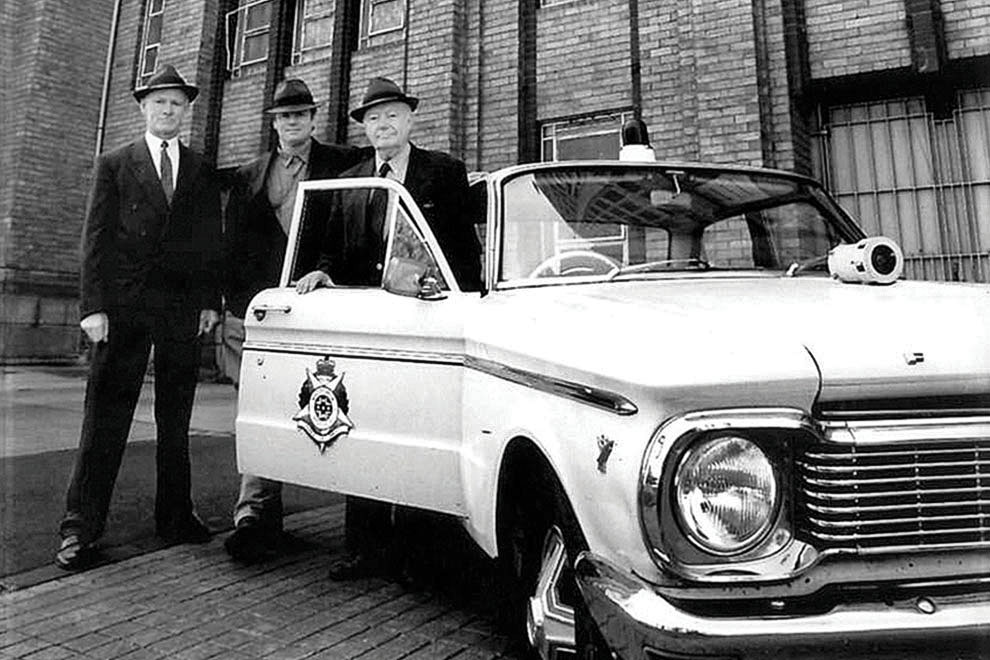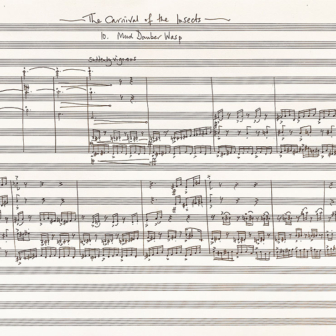Hector: The Story of Hector Crawford and Crawford Productions
By Rozzi Bazzani | Arcadia | $39.95
Those of us of a certain age may remember Hector Crawford from his appearances on television in the 1970s and 1980s, announcing the winners of his Showcase talent quest or conducting orchestras in flamboyant style as part of his Music for the People concerts. He was a showman, a true master of ceremony with his long, flowing silver hair, deep voice and formal suit. As the founder and chair of Crawford Productions, Hector might well have chosen to sit in the background like the other businessmen behind early television – Reg Grundy, Frank Packer or Reg Ansett – but he loved the limelight and never doubted that television was, at heart, show business.
This extraordinary character was not some exotic refugee from a more sophisticated culture but a child of the suburbs of Melbourne. As Rozzi Bazzani explains in her biography of this larger-than-life figure, his family was musical, with his mother conducting the choir and playing the organ in the local Baptist church in East St Kilda. The breakthrough moment for Hector was a choir scholarship to St Paul’s Cathedral School, where he imbibed the teaching and philosophy of the choirmaster, Dr Alfred Floyd, who believed that music nourished the inner life and should be accessible to everyone, particularly working people. It was a solid education in music and in self-discipline, leaving the teenage choirboy with a lifelong passion and a desire to communicate that passion. Nevertheless, Hector’s scholarship ended when his voice broke; he never matriculated and never gained any formal qualifications as a musician and conductor.
The other important element in his career was his relationship with his talented older sister, Dorothy, who shared her brother’s passion for performance. Dorothy sang and played the piano, and wanted to go on the stage. As this would not please their respectable, church-going family, she directed her talents towards elocution teaching. By 1930, she had instigated a Church Dramatic Society, which quickly became the Dorothy Crawford Players, performing in church halls around Melbourne, with her parents and brother contributing as musical directors, managers and performers. Bazzani suggests that the driving force behind the Crawford siblings was their desire to “escape from living a small life in a small place.” At the same time, they were quintessentially of the suburbs, sharing a love of music and community with their family. They found ways to express their talents and energy without needing to venture beyond Melbourne, and their understanding of the tastes and desires of their fellow suburban Australians was a key to their later success in radio and television.
Through the 1930s, Hector held down a clerk’s job at the State Electricity Commission during the day and made himself integral to the Albert Street Melba Conservatorium by night, conducting choirs and orchestras and attending music classes. By 1939 he was conducting the Conservatorium orchestra in the Music for the People concerts in the Melbourne Botanic Gardens. Always alert to new technology, Hector convinced Radio 3UZ to broadcast the concerts so that the large crowd of 30,000 people listening in the Gardens could share their experience with listeners across the city. In wartime Melbourne, such concerts were an important boost to community morale and they raised money for war comforts for soldiers.
The war also meant limitations on imported radio programs, particularly from the United States. Hector and Dorothy seized the opportunity to move into radio, with Hector establishing a production company initially to make musical programs. Over the next ten years, the Crawfords developed their expertise in broadcast production, Dorothy concentrating on drama and Hector devoting himself to music programming while using his sales talents to pitch new programs to radio networks. They prepared for the arrival of television by travelling to the United States and Britain in the 1950s to observe television production there, and set up their own production school to train Australians in the new technology.
As the big media players, desperate to keep their advertising revenue, moved in on television, the Crawfords found it difficult to sell their products to the networks for a reasonable return. But they persevered, compromising where necessary to produce reality shows (Wedding Day in 1956), slapstick comedy (Take That, an idea stolen from the radio show Yes, What) and game shows until the broadcasters realised that the 40 per cent Australian content requirement meant that drama and quality music shows would be an essential part of the television mix.
The story of the success of their first police drama, Homicide (1964–76), is one of the legends of Australian television history. Bazzani recounts some of the excitement behind the making of the cop show that proved Australian audiences would respond to local drama, no matter how primitive it appeared compared to the American product. The Crawfords would go on to produce such beloved shows as Division 4, Matlock Police, The Sullivans, The Flying Doctors and All the Rivers Run, with a respectable success rate on a range of other shows. Sometimes these folded at the apparent caprice of network owners; sometimes they went on to have long international runs. Hector kept his interest in music variety by devising and supervising talent quests, culminating in Showcase, and taking the performers on the road to regional audiences.
Through all this, he battled to keep the company afloat, going into debt and sometimes scrambling for investment support. As early as 1959, he tried to sort out the Australian content situation by sending every state and federal politician a copy of his “yellow booklet” arguing for the importance of Australian content, particularly drama, for “national identity” – ideas that may have gone out of fashion but still seem essential for the survival of Australian creativity. He referred to the history of the struggling Australian film industry and warned the politicians against allowing a similar situation for television: “Television,” he wrote, “offered a way to unite Australia as a nation with a unique perspective.” Bazzani remarks that Hector’s social and political beliefs were “good for business,” but they were also good for Australian television, Australian performers and producers and, in the long run, for Australian audiences. Though old Crawford staff remember absurd economies in production, profit was clearly not the main driver of the enterprise.
Hector’s outgoing personality and talent for friendship seem to have given him resilience and a determined optimism. As Dorothy’s health declined, he emerged as a mostly benign patriarch. He treated his staff as family, with a rather demanding notion of reciprocal loyalty. Anyone watching Crawford shows will recognise that there were favourite actors and regular writers and directors. Hector was loyal, but he expected loyalty in return – and sometimes the same willingness to go without that a family might tolerate. Eventually, the people he trained and loved – even surrogate sons like writer, director and company executive Ian Jones – would seek the freedom to make their own shows and start their own production companies.
Bazzani remarks that she found little private correspondence or personal material to reveal Hector’s inner life, but he may well have been one of those extroverts who live most fully when performing and engaging with other people. His energy was enormous and photos depict him socialising with stars or in tennis gear, ready to play on the family tennis court. The sub-plots here – the lives of Dorothy, forging a career for herself, and of Hector’s wives, the violinist Edna Stock and the singer Glenda Raymond – indicate something of the difficulties for talented women who also wanted to marry and have family lives in the 1940s and 1950s.
There are many people still living who have stories about Hector Crawford, and Bazzani handles the mass of material by writing short chapters, interspersing the details of policy and business with illustrative anecdotes about the fun of working for Crawford Productions. No one would want to lose the detail that the first Homicide episodes were written by a partnership that included Eric Millar (pen-name “Enid Johns”), a serving police officer who later became deputy commissioner of the Victorian Police, nor the story of Terry Stapleton auditioning for an acting role in front of the assembled Crawford family at their holiday house, only to find himself offered a scriptwriting position (he was too short to play a policeman). Yet the other part of the story – how a man from the suburbs became a major player in Australian television – may have more importance for the history of Australian cultural life.
The Crawford company emerged at a time when private individuals created institutions we now expect to be subsidised by government – theatre companies, music concerts, local drama writing, specialist training schools. (Even the Melba Conservatorium of Music was a private institution.) In the 1950s and 1960s Crawford Productions contended with the big media businessmen and governments that served their interests. The Menzies government preferred to award a television licence to the airline director, Reg Ansett, than to experienced and committed television producers like the Crawfords; it is a testament to Hector’s character that he soon befriended Ansett and became his most reliable television adviser. When Whitlam came to power, the Crawfords had to adjust to a government prepared to subsidise rival activities, including setting up the Australian Film, Television and Radio School and providing grants to support film-making. Hector had difficulty transitioning from the private world to a subsidised one in which writers and actors actively campaigned against his company in the name of equity.
Nowadays the idea that a single individual with negligible assets – or a couple of talented family members like Dorothy and Hector Crawford – could build up a production studio on the scale of Crawford Productions seems unimaginable. Bazzani’s book begins with a scene in which Hector watches the 1988 auctioning of stock from his studios, implying that his career ended in a kind of failure and loss. Crawford Productions expanded into so many areas – training, documentary-making, film, touring artists – and it relied so heavily on Hector and Dorothy’s particular talents that it would have been difficult to find anyone to continue it in the “Hollywood on the Yarra” style he envisaged. He was unable to hand the business on to other members of the family, or to one of his protégés, but his career as an entertainer of his fellow Australians must be counted an extraordinary success.
Crawford Productions had a foundational role in Australian television, and it trained many of the filmmakers and television producers who continue to keep the industry alive. As we watch the parade of reality, game and panel shows that make up current television programming, we may regret that Hector Crawford was unable to convince the government to support 75 per cent Australian content, or to weight that content towards Australian drama. On the occasions that Australian drama does appear, whether on film or television, it is likely to be produced by people who learnt their skills at Crawford Productions. •




